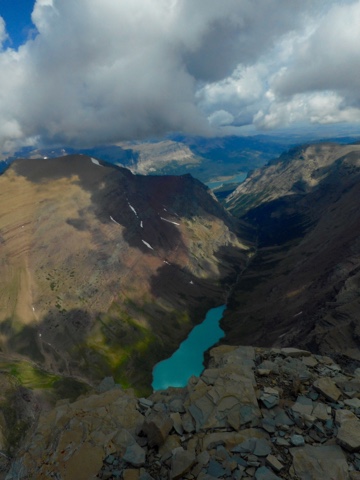What! No mention of creating a frothy cappuccino?
As you can see, the USFS was asking a lot of mere mortals. In 1908, the Coeur d'Alene National Forest hired Edward C. Pulaski. The fledgling organization then scored all they had asked for and a whole lot more. Ranger Pulaski was the right man at the right time in "The Big Blowup" or AKA "The Big Burn" of 1910.
In the summer of 1910, the Forests of northeast Washington, the Pan Handle of Idaho and western Montana were "snap, crackle, pop" dry. There wasn't a can of beer's worth of rain in the month of July. Small scattered fires began to spring up. They were fought by small and scattered fire fighting crews. There wasn't any cohesive game plan or organization to their efforts. At the time, Big Picture communications and an Incident Command System were nonexistent.
On August 20th, there was a change in the weather. A cold front had entered the scene. It was accompanied by a wild land firefighters worst nightmare. Wind. Just like that, those isolated pockets of fire coalesced into something terrible. Imagine a bowl of Coleman fuel with an addition of a lit match Whump!
That faithful morning, Pulaski left the mining town of Wallace, Idaho. His parting words to his wife and adopted daughter were "Good bye I may never see you again." Now, that's a John Wayne moment! He then went up into the steep hills and became part of firefighting history.
As Pulaski ascended toward the flames, he noticed rapidly deteriorating conditions. He gathered 45 firefighters and shepherded them into an abandoned mine tunnel. He placed a wet blanket across the entrance. A few of the panicked men tried to flee the tight enclosure. Ed pulled out a pistol, and threatened to shoot the first one to make a move. No one called him on it. The heat/smoke/CO2 eventually caused all to lose consciousness. Five never woke up.
In the inferno's aftermath, the survivors stumbled through the ashy chaos and back into the half-burned over town of Wallace. Pulaski spent the next two months in the hospital recuperating. The Big Burn left him damaged both physically and mentally. He died one year after retiring from the USFS in 1931.
His legacy continues. Ed left behind a wild land firefighting tool that bears his name. The Pulaski-half ax and half mattock. He came up with the idea in 1911 and fine tuned it by 1913.
78 firefighters were killed in the Great Fire of 1910. The conflagration consumed 3,000,000 acres of timber too. (Cinders were free falling from the darkened skies as far away as Denver and Chicago)
Now we ask this question? With all the improvements in training, communications and weather forecasts; why do wild land firefighters still die?
Be safe out there.
If you find yourself in Wallace, Idaho please take the time to hike the Pulaski's Tunnel Trail. It's a fitting tribute to a true American Hero.
Jeff
The final photo is for Ed.



















